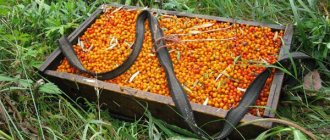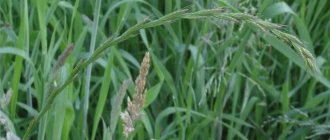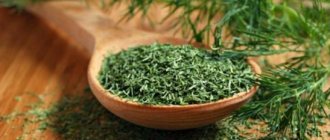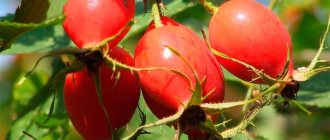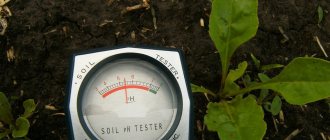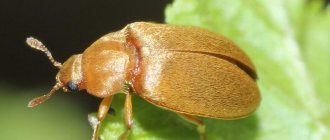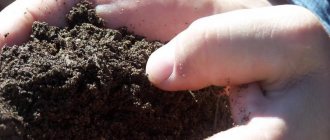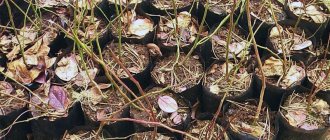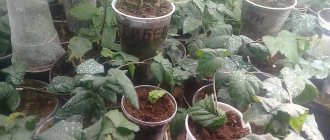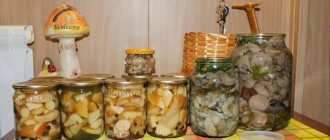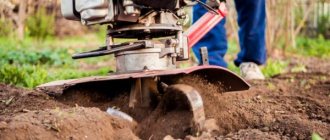Drying determines whether the grass will have the necessary properties or not. Last time I told you how to properly collect herbs for magical purposes and at what time it should be done. Why do you need to dry the grass? What will you do with it? The type of drying you should choose depends on your goals. There are essentially 2 main ways this can be done.
I recommend watching the video at the end of the article, because... from it you will learn what needs to be done to return your husband to the family .
Preparation
To harvest the grass, it is necessary to collect it correctly. Pick them before they start to bloom. Later, too, you can, but the aroma will be much weaker. Harvest plants early in the morning while there is dew on the leaves. Plants picked after lunch will wither faster. It is important to know the rules for collecting certain types of herbs. For example, chives grow actively in both spring and summer. Therefore, feel free to cut it to the very root. Remove parsley leaves with stems, and basil without them. You can also buy the herbs you need at the market or grocery store.
Sort through the herbs before drying. The total mass should not contain dry, yellowed or damaged leaves
It is necessary to start drying plants as soon as possible after collection. Do not let them sit in a basket or box for a long time. This creates a greenhouse effect, and they begin to rot.
Sort through the herbs before drying. The total mass should not contain dry, yellowed or damaged leaves. Do not dry the raw materials together; be sure to separate them by type. After this, rinse them thoroughly and shake off any spills. Next, blot the plants with a paper or cotton towel.
How to collect flowers and leaves, what is important to consider
If the summer is dry and hot, the plant will bloom faster.
Both leaves alone and leaves together with flowers are collected; they must be placed separately from each other and do not grab fruits with seeds, as they will crack when ripe and the fluff will get into the tea.
Important:
- the lower darker leaves of fireweed are not collected (the plant needs them to maintain metabolic processes);
- Before collection, it is necessary to remove all metal jewelry, since when fireweed comes into contact with them, its beneficial properties are reduced.
How to choose suitable raw materials and reject unsuitable ones?
Koporye tea should be collected ONLY in environmentally friendly places, that is, there should not be:
- Enterprises.
- Cemeteries.
- Garbage dumps.
- Power lines.
- Highways.
Important:
- Do not under any circumstances confuse fireweed with plants of the same family, as they are not suitable for consumption.
- There is no need to collect fireweed that shows signs of disease (presence of spots and darkening), as well as those that are damaged by insects.
Air drying
This method requires suitable weather - hot and dry. Dry herbs outdoors only under cover. Its absence is allowed only for drying some plants, for example juniper, calamus, valerian. Spread the herbs in a single layer on a baking sheet or wooden board. Place in the shade and turn over once a day. This drying will take several days.
You can also dry herbs indoors. Make small bunches of washed and dry twigs and tie them. Hang with leaves down and place in a dry, well-ventilated area. Within a week the herbs will be completely dry.
Dried flowers for dreamers
People with imagination will always find a use for dried flowers. They will decorate your interior, make an original gift for your loved ones, and enliven any boring space.
Dried flowers are suitable for creating compositions of unearthly beauty.
What flowers should be selected to create “dry bouquets”
Many varieties of flowers will allow you to create extraordinary compositions. Suitable for this
- immortelle,
- hydrangea,
- lupine,
- delphinium,
- sunflower,
- thistle or
- artichoke.
How to dry them at home?
- Collect flowers in dry weather. Preference should be given to those whose petals sit very tightly.
- Then some of the foliage should be removed from the stems, and the thorns should be removed from the rose.
- Next, group from 5 to 9 specimens into a bouquet by variety.
- Hang the bunches upside down in a dry, dark place.
On a note! In order for the flowers to become flexible, they must be soaked in glycerin before drying. To do this, pour 2/3 cup of very hot water into an empty container, add a third of a glass of glycerin. Place the bouquets so that they absorb the glycerin, then dry.
In the oven or electric dryer
The fastest way to dry plants for tea or spices is to use a dehydrator. Set the temperature on the device no higher than +40 °C and place the necessary herbs there. If you dry different types together, the smells will mix, so process each separately. Keep the herbs in this mode for 20 minutes, then check their readiness. If you need more time, reduce the temperature to +30 °C and leave for 20 minutes. If the room humidity is high, increase the temperature by 10 °C. If you use an oven, remember that the temperature in it should not exceed +50 °C. At the same time, keep the door ajar by 10–15 cm at all times.
Medicinal plants and their expiration dates
Photo: Pixabay
There is nothing eternal on earth. Plants that come to life for only six months make us think about the fragility of all things. Even when collected and dried, the beneficial properties of the herb have a limited time.
Having collected a whole heap of calamus that was surprisingly born this year, I really want to breathe a sigh of relief! In the next ten years, its reserves will not dry out and you don’t have to worry about it anymore. These are just dreams, nothing will come of it. Next year we will have to collect it again.
- Calamus rhizomes, as well as chaga and parsley roots, will be useful for one year.
- Birch buds, strawberry fruits, mullein flowers, nettles, corn silks, lily of the valley grass, linden flowers, raspberry fruits, fern rhizomes, plantain leaves, sunflower flowers and leaves, wormwood, chamomile grass, rowan fruits, yarrow, blueberry and rosehip fruits will serve you two years.
- For three years, you can count on celandine, bird cherry rhizomes, hop cones, shepherd's purse grass, motherwort and dried grass, caraway fruits, coltsfoot leaves, oregano grass, immortelle flowers, valerian roots, elecampane rhizomes.
- Viburnum bark and horsetail grass will be ready for your service within four years.
- Oak bark, burdock or dandelion root, bearberry leaves and bird cherry bark will not deteriorate for five years.
Remember expiration dates! Some plants will not be beneficial after a certain time, but can also cause food poisoning and other complications.
These terms are approximate and may vary depending on a variety of conditions.
It is important to properly store collected plants. If dried raw materials get wet or end up in a humid room, the shelf life may decrease. High or low storage temperatures, humidity or dampness can render raw materials unusable
Was this article helpful? Yes3No
In the microwave
Place a paper napkin on a glass dish and place it in the microwave. Place the herbs on top in a single layer and microwave at minimum temperature for 3-4 minutes. After this, remove the plants, turn them over and repeat the procedure after 5 minutes. Do this until the herbs are completely dry.
Read also: How to dry garlic?
What do you need to know to cook dried apricots?
Cleaning curtains: useful care tips
From which plant leaves?
Almost all cultivated garden plants are suitable for collecting leaves and then brewing them. This raw material does not contain theine or caffeine, but it releases tannins, sugars and vitamins into the boiling water, which strengthen the immune system and stimulate digestion.
First of all, pay attention to the foliage of fruit and fruit trees. These include quince, apple, chokeberry, cherry, red cherry, pear, plum, sea buckthorn
Sea buckthorn leaves have a huge impact on the health of the human body. Read more about the beneficial properties of sea buckthorn leaves.
The tea made from such leaves is aromatic and has a lot of tannins. It invigorates, tones, and has an immunomodulatory effect. This drink softens mucous membranes and thins the blood.
The second group includes raw materials from deciduous trees. These are maple, linden, walnut. Not everyone will like this tea, but its benefits are undeniable. The drink strengthens the walls of blood vessels, cleanses the liver, and prevents age-related heart problems. It is recommended to drink it for people who are exhausted by a long illness, or those who suffer from overwork.
The third group is foliage from berry and nut bushes. This group includes red and black currants, raspberries, blackberries, hazels, dogwoods, rose hips, gooseberries, and sloe. A real vitamin bomb, a drink made from the leaves of shrubs is useful for hypovitaminosis. It improves the health of the oral cavity, increases vascular tone, has a slight astringent effect and produces a cleansing effect.
The last group, leaves of herbs and berries, includes the well-known mint, lemon balm, strawberries, wild strawberries, chamomile, and dandelion. Such teas help with nervous system disorders. They have a calming effect, eliminate sleep problems, and quickly quench thirst.
Did you know? Tea
is an oriental drink, and its homeland is China. The exact origin of the tea remains unknown. There is a version according to which the Chinese Emperor Shen was relaxing at lunchtime under a camellia tree when his servant brought him a cup of boiling water. Some camellia leaves accidentally fell into the cup. The emperor, out of curiosity, decided to try this gift of nature, and he liked the taste of the drink so much that the emperor ordered from then on to treat him exclusively with it. This supposedly happened in the 2700s BC. Tea from camellia leaves is still prepared today - these are the black and green teas we all know .
In the oven
This method is considered classic. If it is necessary to dry a small amount of herbs, an ordinary oven is used. Its advantage is that it releases heat to the plants slowly and evenly. Typically the oven is not lit specifically to dry the herbs, but rather the heat from after cooking is used. The temperature inside the structure should not exceed +60 °C. The main disadvantage of this method is the inability to adjust the temperature and improve air circulation. Kilns are also used when large quantities of herbs need to be dried.
Herbal tea: the benefits and harms of your favorite drink
While some experts consider herbal medicine to be a promising direction in medicine, others are skeptical about herbal treatment. For people far from science, one thing is clear - adding leaves and herbs to tea helps discover new tastes and makes life a little brighter and more varied.
However, we should not forget that any plant contains a huge amount of various substances, the effect of which on the human body often remains unknown, and the thoughtless use of herbal teas to treat diseases is simply dangerous. However, let's not exaggerate.
One of the distinctive features of the use of plant-based infusions and decoctions is the mild and gradual effect of most of them. This means that with a high degree of probability, infrequent consumption of such drinks will not cause harm to the body. And provided that you are confident in the environmental friendliness of the raw materials, this makes them an excellent alternative to industrially produced teas.
Any long-term use of herbal teas should be accompanied by mandatory consultation with your doctor. This is especially true for pregnant women, children of primary school age and people suffering from chronic diseases.
Herbal teas lift your spirits and help you unwind after a hard day at work. Don't deny yourself the pleasure of pampering yourself with a cup of warm aromatic tea!
Storage
If the dry grass crumbles easily in your hands, this means that it is ready and you can store it. Keep plants only in dry areas with good ventilation. It is best to place them in airtight glass jars. You can also use wooden or ceramic containers. Write on each of them what kind of herb is stored there and the time of its collection.
Now you know how to properly dry herbs for tea and seasonings for the winter. Remember that if the temperature is too high, plants lose their beneficial properties. Properly dried grass does not change its color, and the smell becomes even more intense.
How long can decoctions and infusions be stored?
If we talk about dosage forms such as decoctions and infusions, we must first of all understand that aqueous extracts from plants have a much shorter shelf life than, for example, alcoholic ones. They also include concentrates (an aqueous solution of a plant extract, which can be dry or liquid). The decoction has medicinal properties for only a short time. The processes that lead to fermentation and, as a consequence, the formation of various bacteria, completely change its chemical composition. Thus, instead of the desired effect, you can get a completely opposite result. So where, how and how long to store the decoction?

